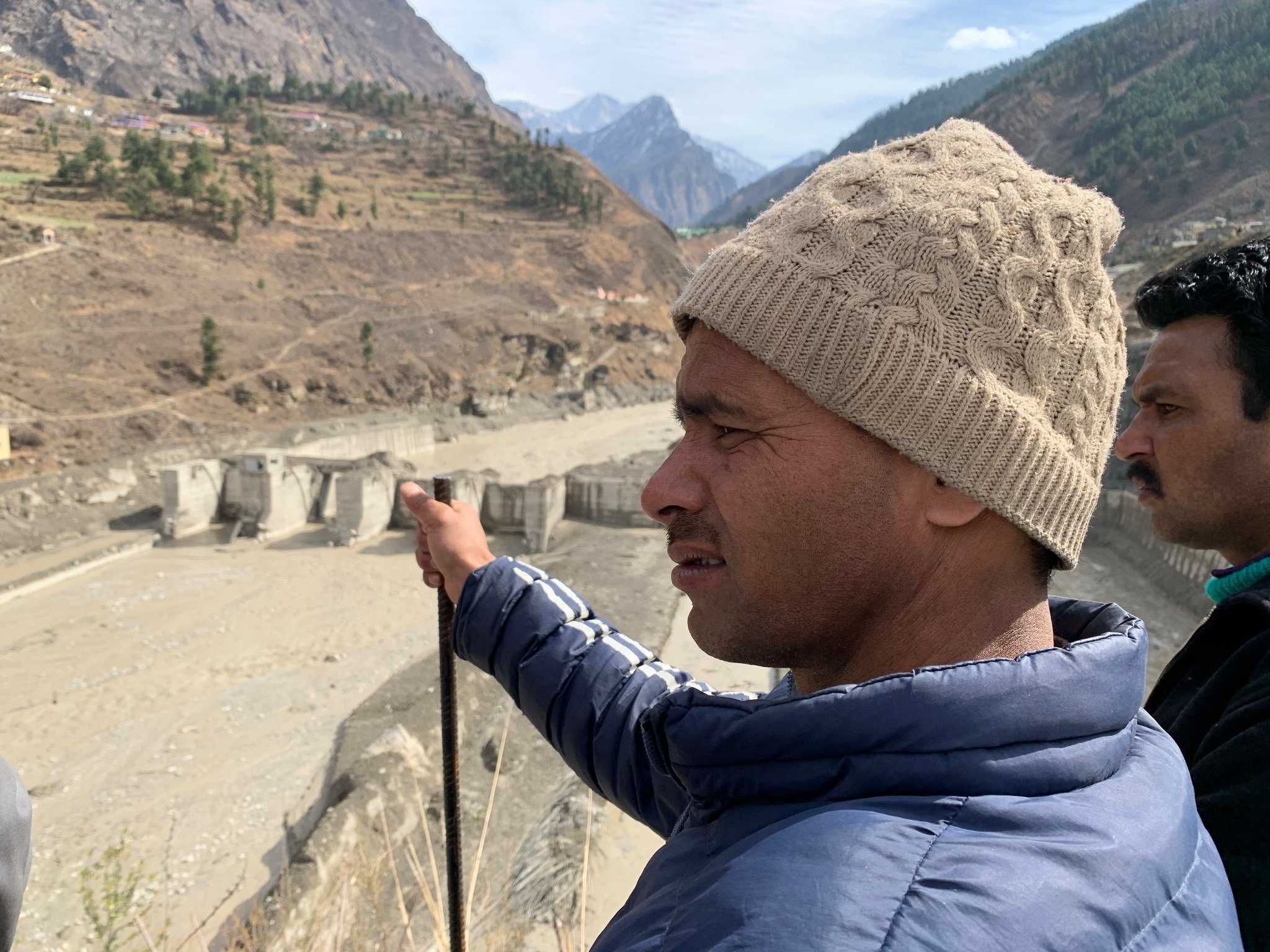
NEW DELHI (AP) – When Ravi Chopra saw the devastating torrent of water and debris crash downstream from a Himalayan glacier on Sunday, his first thought was that this was exactly the scenario his team had warned the Indian government for in 2014.
At least 31 people have died, 165 people are missing and many more are feared to have died. The flood first hit a small dam, accumulating more energy as the debris it collected along the way grew heavier. Then it slammed into a larger dam under construction and gathered even more energy.
Chopra and other experts had been commissioned by the Indian Supreme Court to study the impact of retreating glaciers on dams. They had warned that global warming caused by climate change was melting glaciers in the Himalayas, enabling avalanches and landslides, and that building dams in this fragile ecosystem was dangerous.
“They had clearly been warned, and yet they continued,” said Chopra, director of the nonprofit People’s Science Institute.
Scientists first suspected that a glacial lake had burst, but after examining satellite images, they now believe a landslide and avalanche were the most likely cause of the disaster. What is not yet clear is whether the landslide caused an avalanche of ice and debris, or whether falling ice resulted in the landslide, said Mohammad Farooq Azam, who studies glaciers at the Indian Institute of Technology in Indore.
What is known is that the mass of rocks, boulders, ice and snow plunged down a 2 kilometer long, almost vertical mountain slope on Sunday. And now scientists are trying to figure out if the heat produced as a result of friction during this crash would be enough to melt the snow and ice, resulting in the flooding of water, he said.
Experts say the disaster underscores the fragility of the Himalayan mountains, where the lives of millions are being transformed by climate change. Even if the world were to meet its most ambitious climate goals, rising temperatures would melt away a third of Himalayan glaciers by the end of the century, a 2019 report found. found by the International Center for Integrated Mountain Development. Himalayan glaciers are melting at twice the rate since 2000 as in the previous 25 years as a result of man-made climate change, according to a 2019 article published in Science Advances.
Whether this particular disaster was caused by climate change is not known. But climate change can increase landslides and avalanches. As glaciers melt due to warming, valleys previously crammed with ice open up, leaving room for landslides to move in. In other places, steep mountain slopes can be partially “glued” together by ice that has frozen firmly in the crevices. “As the ice warms and melts, the pieces can move downhill more easily, lubricated by the water,” explains Richard B. Alley, professor of earth sciences at Pennsylvania State University.
With the heating up, ice is also essentially frozen less: previously the temperature would vary between minus 6 degrees Celsius to minus 20 C and it is now minus 2 C (from 21.2 degrees Fahrenheit to minus 4 F previously to 28.4 F now ), Azam said. The ice is still frozen, but is closer to its melting point, so it takes less heat to trigger an avalanche than it was several decades ago, Azam added.
Another threat from global warming is that of a glacial lake bursting – what some initially suspected was the cause of Sunday’s disaster. The danger posed by these expanding lakes becoming more susceptible to breakthroughs cannot be ignored, says Joerg Michael Schaefer, a climate scientist specializing in ice and especially the Himalayan glaciers at Columbia University.
The water that the lakes discharge into rivers contains the energy equivalent to “various atomic bombs” and can provide clean, carbon-free energy through hydropower projects.
The water released by the lakes into rivers contains the energy equivalent to “various nuclear bombs” and can provide clean, carbon-free energy through hydropower projects, Schaefer said. But setting up power plants without looking uphill and reducing the risk by siphoning water from the lakes to control levels was dangerous, he said.
“The raw power of these things is just really astonishing,” especially when they break, he said. ‘You can’t tame that tiger. You must prevent that. “
Uttarakhand’s state government said it was constantly dealing with “acute power shortages” and had to spend $ 137 million every year to buy electricity, according to documents filed with India’s Supreme Court. The state has the second highest hydropower potential in India, but experts say solar and wind power offer more sustainable and less risky alternatives in the long run.
Development was needed for the upliftment of the impoverished region, but experts said the paradigm shift was necessary so that such projects take into account the ecological vulnerability of the mountains and the unpredictable risks of climate change.
During the construction in 2009 of the second dam hit by floods on Sunday, workers accidentally pierced an aquifer. Enough water for 2-3 million people to drink was drained every day for a month at a rate of 60-70 million liters of water and villages in the area faced water shortages, the 2014 report found.
Development plans must “go with the environment” and not against it, said Anjal Prakash, a professor at the Indian School of Business who has contributed to research into the impacts of climate change in the Himalayas for the Intergovernmental Panel on Climate Change.
“Climate change is here and now. It’s not something that will happen later, ”he said.
___
Victoria Milko in Jakarta, Indonesia, and Seth Borenstein in Kensington, Maryland contributed to this report.
___
The Associated Press Department of Health and Science is supported by the Science Education Department of the Howard Hughes Medical Institute. The AP is solely responsible for all content.